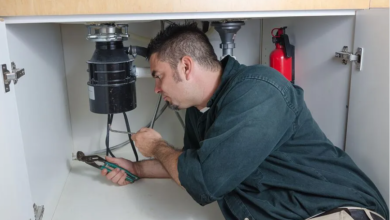
Spray Foam Insulation vs. Other Types of Attic Insulation: What’s Best?
Choosing the right insulation for your attic can significantly impact your home’s energy efficiency, comfort, and long-term utility costs. With multiple insulation options available, homeowners are often faced with the decision between traditional materials like fiberglass and cellulose, or modern solutions like spray foam insulation. Each type has its own advantages and limitations, but understanding how they compare will help you make an informed choice for your attic.
Spray foam insulation has gained popularity in recent years due to its high energy performance and air sealing capabilities. While it often comes at a higher upfront cost, many homeowners find the long-term benefits worth the investment. For professional guidance and quality service, Century Insulation offers expert installation across Minneapolis and surrounding areas.
Overview of Common Attic Insulation Types
Before diving into comparisons, it’s essential to understand the primary types of attic insulation:
- Fiberglass insulation: Available in batts or loose-fill, it’s the most common and cost-effective choice. It’s easy to install but less effective at sealing air leaks.
- Cellulose insulation: Made from recycled paper products, this eco-friendly option is blown into attic spaces and provides decent thermal performance.
- Spray foam insulation: Applied as a liquid that expands into a foam, it creates an airtight seal and offers the highest R-value per inch among residential insulation types.
Each material serves a specific purpose depending on the attic structure, budget, and energy goals of the homeowner.
See also: Advancements in Smart Home Technologies
The Advantages of Spray Foam Insulation
Spray foam stands out for several reasons. It offers excellent thermal resistance, effectively sealing gaps and cracks to prevent air leaks. This not only enhances energy efficiency but also reduces the risk of moisture infiltration, which can lead to mold growth or wood rot.
There are two types of spray foam: open-cell and closed-cell. Open-cell foam is softer, more affordable, and provides soundproofing. Closed-cell foam is denser, more rigid, and delivers higher R-values and moisture resistance.
For homeowners looking for a high-performance solution, spray foam insulation Minneapolis services by Century Insulation are a reliable option that ensures professional application and maximum energy savings.
Comparing Costs and Installation Process
Cost is a major consideration for any home improvement project. Fiberglass and cellulose insulation are typically less expensive upfront. These materials can be installed relatively quickly and are ideal for homeowners on a tight budget.
Spray foam, on the other hand, has a higher installation cost due to the specialized equipment and training required. However, its long-term benefits—like reduced heating and cooling bills—can offset the initial investment over time.
The installation process for spray foam is also more complex. It requires protective gear, ventilation, and curing time. Hiring certified professionals ensures safety and proper application, which is critical for optimal performance.
Performance and Energy Efficiency
When it comes to energy efficiency, spray foam outperforms other insulation types. Its ability to form an airtight seal minimizes heat transfer more effectively than fiberglass or cellulose. This results in lower energy bills and a more consistent indoor temperature.
In contrast, traditional insulation materials may leave small gaps or settle over time, reducing their effectiveness. While fiberglass and cellulose still offer decent thermal resistance, they don’t provide the comprehensive air sealing that spray foam does.
Moreover, spray foam insulation can add structural integrity to the attic, especially when using closed-cell foam. This added rigidity can be beneficial in areas with high wind or heavy snowfall.
Long-Term Value and Durability
Durability is another factor that differentiates insulation types. Fiberglass can lose effectiveness if it becomes wet or compressed, while cellulose is susceptible to moisture and can settle over time. Spray foam insulation, particularly closed-cell, resists moisture and maintains its form and insulation value for decades.
Because of its longevity and performance, spray foam insulation often pays for itself through energy savings and reduced maintenance. This makes it a great option for homeowners planning to stay in their homes long term.
Conclusion
Choosing the best attic insulation depends on your specific needs, budget, and goals. Traditional options like fiberglass and cellulose provide good value and are widely used, especially in existing homes. However, for those seeking maximum energy efficiency, moisture resistance, and long-term value, spray foam insulation stands out as a superior choice.
Investing in high-quality attic insulation, especially spray foam, enhances home comfort, lowers utility bills, and contributes to a healthier indoor environment. By working with trusted professionals like Century Insulation, homeowners can ensure they receive the most effective solution tailored to their property.




